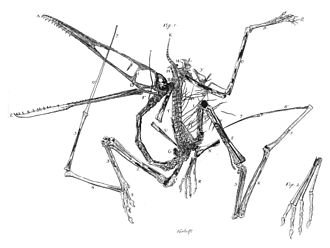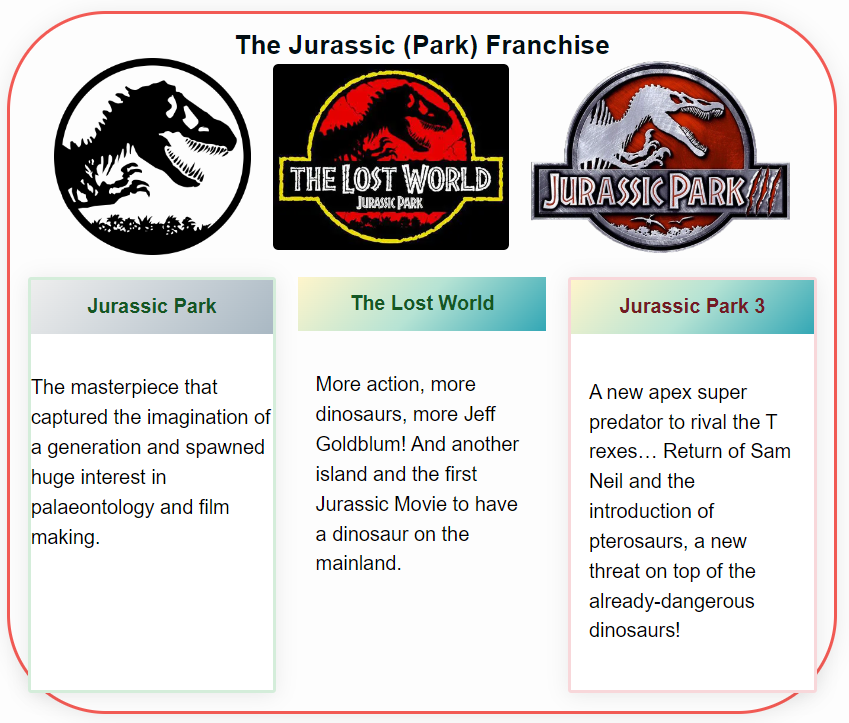
Pterodactylus, an extinct genus of pterosaurs, has captivated the imagination of many for centuries. Often seen as the quintessential representation of prehistoric flying reptiles, this fascinating creature thrived during the Late Jurassic period. When first identified, Pterodactylus was mistakenly believed to be a marine animal using its wings for paddling. However, later research unveiled the truth about this fascinating flying reptile, sparking curiosity and intrigue among scientists and enthusiasts alike.
The genus Pterodactylus is believed to contain a single species, Pterodactylus antiquus, which holds the distinction of being the first pterosaur to be named and identified as a flying reptile. These creatures, more accurately known as pterodactyloids, are characterised by their reduced teeth, tail, and fifth toe. As the last surviving pterosaurs, they perished at the end of the Cretaceous period alongside non-avian dinosaurs and most marine reptiles.
The discovery of Pterodactylus in the late 18th century has paved the way for a better understanding of pterosaurs and their significance in the evolutionary timeline. As more research is conducted, our knowledge of these fascinating creatures continues to grow, shedding light on the mysteries surrounding their life and extinction.
Basic Overview
Pterodactylus as a Pterosaur
Pterodactylus was a flying reptile that lived during the Jurassic Period. As a member of the larger group of flying reptiles called Pterosaurs, it dominated the ancient skies. Pterodactylus was the first pterosaur to be named and identified as a flying reptile, and it is thought to contain only a single species, Pterodactylus antiquus1. These creatures are known for their distinctive wings, which were formed by a membrane of skin, muscle, and other tissues stretching from the elongated fourth finger to the torso2.
Pterodactylus is often depicted flying low over the coastlines of western Europe and northern Africa, much like a modern seagull, plucking small fish out of the water. However, it may also have subsisted on insects or even the occasional small dinosaur3.
Terminology: Pterodactyl vs Pterosaur
While “Pterodactyl” is a commonly used term, it is somewhat of a misnomer. In fact, Pterodactyl is an informal term for a subgroup of flying reptiles known as Pterodactyloids which are part of the broader Pterosauria group4. Pterosaurs include various species, and they lived from the Late Jurassic through the Late Cretaceous epochs (163.5 million to 66 million years ago).
Pterodactyloids are distinguished from basal pterosaurs by their reduced teeth, tail, and fifth toe5. The proper term for these winged reptiles is “Pterosaur,” but “Pterodactyl” still remains popular in general usage.
Footnotes
- Pterodactylus – Wikipedia ↩
- Pterodactylus Facts For Kids, Students and Adults – Active Wild ↩
- Pterodactylus Facts and Figures – ThoughtCo ↩
- Pterodactyl | Description, Size, Wingspan, Skeleton, & Facts ↩
- Pterodactyl: Facts about pteranodon & other pterosaurs ↩
Physical Features
Wings and Wingspan
The Pterodactylus was a pterosaur that lived during the Late Jurassic period, around 150 million years ago. It had a fairly small size and its wingspan ranged from 50 cm (20 inches) to over 1 metre (3.3 feet) in larger specimens1. The wings were composed of a thin membrane of skin and muscle called the patagium, which stretched between the elongated fourth finger and the hind limbs2.
Teeth, Beak, and Crests
The Pterodactylus had a long, narrow beak that allowed it to catch small fish and other prey2. Within this beak, it had razor-sharp teeth that were adapted for catching and holding onto slippery prey3. Some Pterodactylus fossils also exhibit small crests on the head, although these structures were not as prominent as in some other pterosaur species4.
Tail and Fourth Finger
This pterosaur had a short tail, which contrasted with the long tails of earlier pterosaur species, known as “rhamphorhynchoid” pterosaurs2. The short tail contributed to a more efficient flying posture and controlled flight behaviour when manoeuvring. The fourth finger in Pterodactylus was elongated and supported the wing membrane. This adaptation was crucial to their ability to fly, providing structure and strength to the wing2.
Footnotes
- https://www.britannica.com/animal/pterodactyl ↩
- https://www.thoughtco.com/pterodactylus-1091596 ↩ ↩2 ↩3 ↩4
- https://www.livescience.com/24071-pterodactyl-pteranodon-flying-dinosaurs.html ↩
- https://www.thoughtco.com/pterodactyl-dinosaur-pictures-4123094 ↩
Habitat and Behaviour
Geographical Distribution
The Pterodactylus, a flying reptile from the Late Jurassic period (150-144 million years ago), inhabited the shores of Europe and South Africa1. As part of the Mesozoic Era, these pterosaurs thrived during a time when the Earth was dominated by dinosaurs.
Diet and Feeding Habits
Pterodactylus had a diverse diet, feeding on insects, meat, and fish2. Their long beak and neck allowed them to snatch their prey with precision, while their short tail provided stability during flight.
Diet Composition:
- Insects
- Meat
- Fish
Social and Mating Behaviour
While specific details about the social and mating behaviour of Pterodactylus remain elusive, research on similar pterosaurs like Pteranodon suggests that these creatures may have had complex social interactions and behaviours. It is possible that they engaged in group hunting or even exhibited courtship behaviour during mating season. However, more conclusive evidence is needed to confirm these possibilities.
Footnotes
Evolution and Classification
Pterodactylus in the Pterosauria Order
Pterodactylus is an extinct genus of pterosaurs that falls under the Pterosauria order. Pterosaurs were flying reptiles that lived alongside dinosaurs during the late Jurassic and Cretaceous periods. These creatures were not dinosaurs but were closely related to them. Pterodactylus is thought to have contained only a single species, Pterodactylus antiquus, meaning ‘winged finger’, which was the first pterosaur to be named and identified as a flying reptile1.
The Pterosauria order consisted of two main suborders: the rhamphorhynchoids and the pterodactyloids. Pterodactylus belonged to the Pterodactyloidea suborder, also informally known as pterodactyls2.
Fossil Record and Discovery
Fossils of Pterodactylus can be found mainly in Europe, dating back to the Late Jurassic period (150-144 million years ago)3. The species was discovered and identified in 1784 by Italian scientist Cosimo Alessandro Collini4. At that time, Collini thought he had discovered a marine creature that used its wings as flippers, and much of the classification and understanding of Pterodactylus has evolved since then.
The understanding of the pterosaur’s classification and evolution has come a long way, partly through the discovery of related pterodactyloid species like Pteranodon, Quetzalcoatlus, and Germanodactylus3. Due to more fossil specimens being found in recent years, it has become increasingly clear that pterodactyloids are more closely related to modern birds than previously thought.
References
Footnotes
- Pterodactylus – Wikipedia ↩
- Pterodactyl | Description, Size, Wingspan, Skeleton, & Facts ↩
- Pterodactylus Facts and Figures – ThoughtCo ↩ ↩2
- Pterodactyl: Facts about pteranodon & other pterosaurs – LiveScience ↩
Frequently Asked Questions
Is Pterodactylus the same as a pterodactyl?
No, Pterodactylus is not the same as a pterodactyl. The term “pterodactyl” is an informal label used for a group of flying reptiles called pterosaurs, whereas Pterodactylus is a specific genus of pterosaur. Pterodactylus is more correctly referred to as a pterodactyloid, as it belongs to a more advanced subgroup of pterosaurs with reduced teeth, tails, and fifth toes1.
What does Pterodactylus mean?
The name Pterodactylus originates from the Greek words “ptero,” meaning wing, and “daktulos,” meaning finger. This name reflects the unique anatomy of these creatures, which had a long fourth finger on their forelimbs that supported a thin, membranous wing2.
Do pterodactyls still exist?
Pterodactyls, as members of the pterosaur group, no longer exist. All pterosaur species went extinct by the end of the Cretaceous period, around 66 million years ago3. Modern birds, which evolved from dinosaurs, are not descendants of pterosaurs.
Where have Pterodactylus fossils been discovered?
Most Pterodactylus fossils have been discovered in Germany, particularly in the Solnhofen limestone, which dates back to the late Jurassic period4. Fossils have also been found in Tanzania and France, suggesting that Pterodactylus inhabited various regions across the globe5.
When did Pterodactylus live?
Pterodactylus lived during the Late Jurassic epoch, which lasted from around 163.5 million to 145 million years ago6.
How large were Pterodactylus?
The size of Pterodactylus individuals varied, with wingspans ranging from around 1 metre (3.3 feet) to 1.5 metres (4.9 feet). They were small compared to some other pterosaur species, such as the Pteranodon, which had wingspans of up to 7 metres (23 feet)7.

